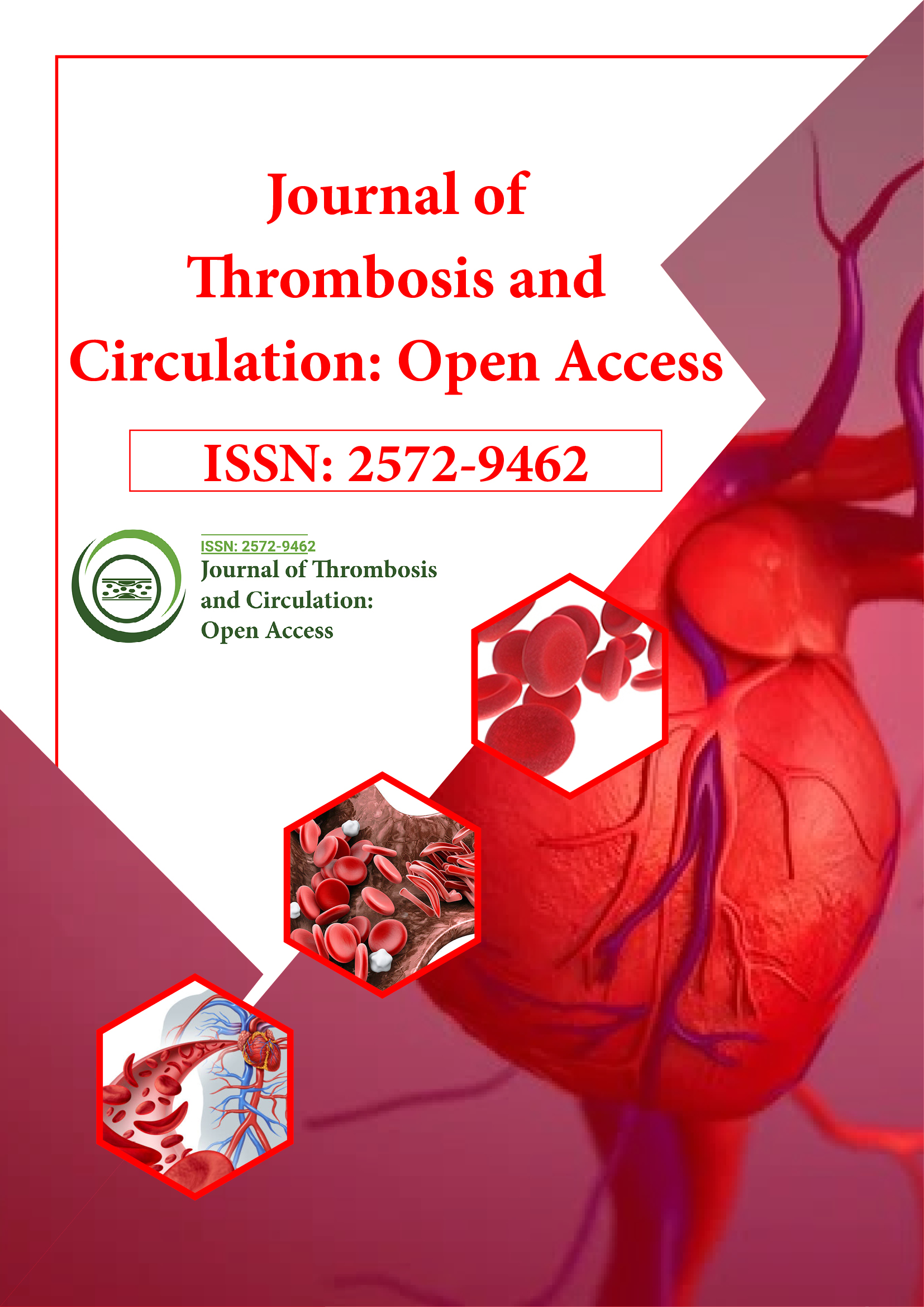Indexed In
- RefSeek
- Hamdard University
- EBSCO A-Z
- Publons
- Google Scholar
Useful Links
Share This Page
Journal Flyer

Open Access Journals
- Agri and Aquaculture
- Biochemistry
- Bioinformatics & Systems Biology
- Business & Management
- Chemistry
- Clinical Sciences
- Engineering
- Food & Nutrition
- General Science
- Genetics & Molecular Biology
- Immunology & Microbiology
- Medical Sciences
- Neuroscience & Psychology
- Nursing & Health Care
- Pharmaceutical Sciences
Commentary Article - (2025) Volume 11, Issue 2
Emerging Antithrombotic Strategies in Peripheral Arterial Disease: Bridging Efficacy and Safety
Elena Kostova*Received: 30-May-2025, Manuscript No. JTCOA-25-29338; Editor assigned: 02-Jun-2025, Pre QC No. JTCOA-25-29338 (PQ); Reviewed: 16-Jun-2025, QC No. JTCOA-25-29338; Revised: 23-Jun-2025, Manuscript No. JTCOA-25-29338 (R); Published: 30-Jun-2025, DOI: 10.35248/2572-9462.25.11.304
Description
Peripheral Arterial Disease (PAD) affects over 200 million people worldwide and is characterized by the progressive narrowing of peripheral arteries, predominantly in the lower extremities. It is a manifestation of systemic atherosclerosis and poses a significant risk for cardiovascular morbidity and mortality. The thrombotic complications of PAD, including acute limb ischemia and cardiovascular events, are a major cause of limb loss and death. Antithrombotic therapy plays a pivotal role in PAD management; however, achieving an optimal balance between efficacy in preventing thrombotic events and minimizing bleeding risk remains a clinical challenge.
Historically, antiplatelet agents such as aspirin and clopidogrel have been the cornerstone of medical therapy in PAD. Aspirin monotherapy reduces the risk of major cardiovascular events, albeit modestly, and clopidogrel has shown superior efficacy in the Clopidogrel versus Aspirin in Patients at Risk of Ischemic Events trial for patients with symptomatic atherosclerotic disease. Dual antiplatelet therapy (DAPT) has been investigated, particularly after revascularization procedures. However, prolonged DAPT increases the risk of major bleeding and is not universally recommended for all PAD patients.
Recent trials have explored novel antithrombotic strategies targeting both platelet aggregation and coagulation pathways. The Cardiovascular Outcomes for People Using Anticoagulation Strategies (COMPASS) trial marked a significant milestone by demonstrating that low-dose rivaroxaban (2.5 mg twice daily) in combination with aspirin significantly reduced the risk of cardiovascular death, stroke, and myocardial infarction in patients with stable atherosclerotic vascular disease, including PAD. Importantly, this benefit extended to limb outcomes, with reductions in major adverse limb events and amputations. The addition of low-dose rivaroxaban, however, was associated with an increased risk of major bleeding, primarily gastrointestinal, underscoring the importance of careful patient selection.
The Vascular Outcomes Study of Aspirin along with Rivaroxaban in Peripheral Artery Disease (VOYAGER-PAD) trial further supported the use of dual pathway inhibition with low-dose rivaroxaban and aspirin following lower extremity revascularization. This strategy led to a substantial reduction in thrombotic complications without a prohibitive increase in bleeding risk. These findings have contributed to the evolving guidelines, which now endorse dual pathway inhibition in selected high-risk patients with PAD, particularly those undergoing revascularization.
Beyond antiplatelet and anticoagulant agents, emerging therapies targeting novel pathways are under investigation. Inhibitors of Factor XI and Factor XII are being evaluated for their ability to reduce thrombus formation without significantly affecting hemostasis. Early-phase trials suggest that these agents may offer protection against thrombosis with a more favorable bleeding profile. Additionally, therapies modulating inflammation and endothelial function are being studied for their potential to address the underlying pathophysiology of atherosclerosis and thrombus formation in PAD.
The role of personalized medicine in PAD is becoming increasingly relevant. Genetic polymorphisms affecting drug metabolism, such as CYP2C19 variants influencing clopidogrel response, may guide antiplatelet therapy selection. Biomarkers such as High-Sensitivity C-Reactive Protein (hsCRP), D-dimer, and platelet function tests could assist in risk stratification and therapeutic decision-making. Integrating such tools into routine clinical practice could optimize therapy and reduce adverse outcomes.
Despite therapeutic advances, PAD remains underdiagnosed and undertreated. Many patients are asymptomatic or have atypical symptoms, leading to delayed diagnosis. Once identified, treatment adherence is often poor, particularly in resource-limited settings. Comprehensive management must include lifestyle modification, smoking cessation, lipid-lowering therapy and glycemic control in addition to antithrombotic therapy. Patient education and multidisciplinary care are essential components of effective PAD management.
In conclusion, the management of thrombotic risk in PAD is undergoing a paradigm shift, with new evidence supporting the use of dual pathway inhibition to prevent both cardiovascular and limb-related events. Future strategies will likely involve a more individualized approach based on genetic, biochemical and clinical profiles. As our understanding of the thromboinflammatory mechanisms underlying PAD deepens, the development of safer and more effective therapies holds promise for reducing the global burden of this disease and improving outcomes for affected patients.
Citation: Kostova E (2025). Emerging Antithrombotic Strategies in Peripheral Arterial Disease: Bridging Efficacy and Safety. J Thrombo Cir. 10:304.
Copyright: © 2025 Kostova E. This is an open-access article distributed under the terms of the Creative Commons Attribution License, which permits unrestricted use, distribution, and reproduction in any medium, provided the original author and source are credited.
